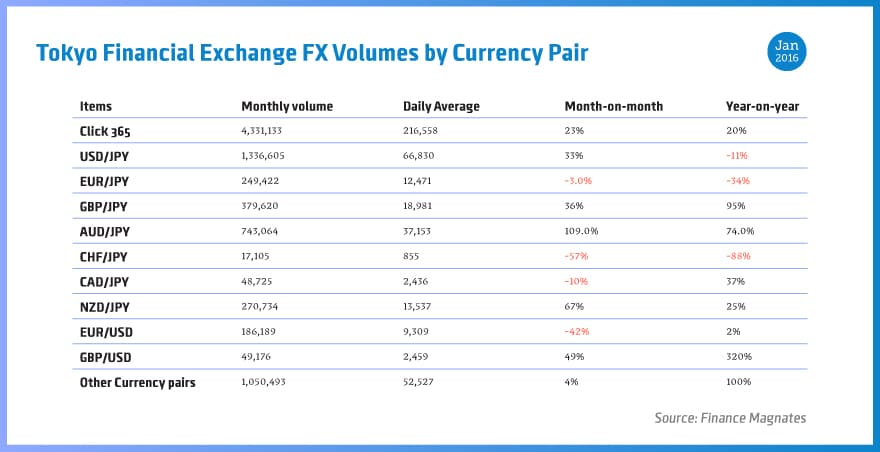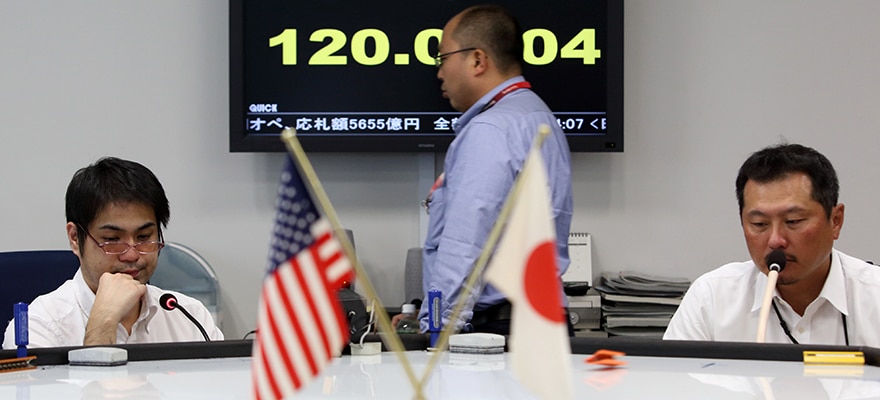The Tokyo Financial Exchange (TFX) has announced that trading volumes in foreign exchange have rebounded materially in January 2016. The first month of the year is likely to result in massive volumes increases for Japanese retail brokerages.
Looking at the specific numbers, trading activity rebounded by 22.9 per cent when compared to December 2015. The figure is also higher when compared to a year ago by 19.8 per cent. Considering the exceptional circumstances surrounding the Swiss franc last year, 2016 seems to be off to a good start when looking at FX trading volumes.
TFX has also detailed the currency pairs where most of the trading activity growth was focused. Unsurprisingly, the Japanese yen crosses steal the show with trading in the USD/JPY growing by 32.5 per cent, and representing well over a quarter of all volumes transacted on the Tokyo Financial Exchange.
At the same time, the EUR/JPY underperformed alongside the EUR/USD pair, where tight ranges ensued for most of the month. Looking beyond the Japanese yen, British pound trading spiked higher as markets started digesting the risks to the UK financial system from a prospective Brexit .

Tokyo Financial Exchange FX data by currency pair, Source: Tokyo Financial Exchange
Undoubtedly, the Bank of Japan (BOJ) was the sole factor behind the massive rebound in foreign exchange trading activity in the country. Last Friday, the monetary policy authority surprised markets with a decision to introduce negative deposit rates on the reserves that banks are holding at the BOJ. As a result the Japanese yen tanked across the board and is expected to remain volatile in the near term.
According to Barclays, the near term risks favor additional Volatility in the near term. In a research note, the bank stated: “Uncertainties around Fed rate hikes, fragile global risk dynamics, and extended undervaluation of the JPY also remain significant headwinds for USD/JPY and these factors will have to balance against the impact of negative interest rates.”
“At the least it suggests even higher volatility in USDJPY over the coming months as these conflicting forces weigh against each other,” the research note concluded.
Looking beyond FX, the activity on the exchange traded equity index margin contracts through the Click kabu 365 platform has increased by 36.6 per cent when compared to last year. Trading the Nikkei 225 margin contracts has increased by 39.8 per cent then compared to December 2015.
In addition the Tokyo Financial Exchange (TFX) called for additional margin in positions on the Interest-rate Futures contracts for the first time since 14 March 2011, as the Three-month Euroyen futures market soared.

















